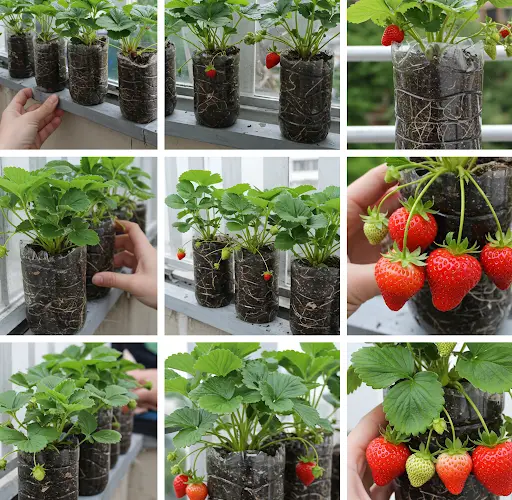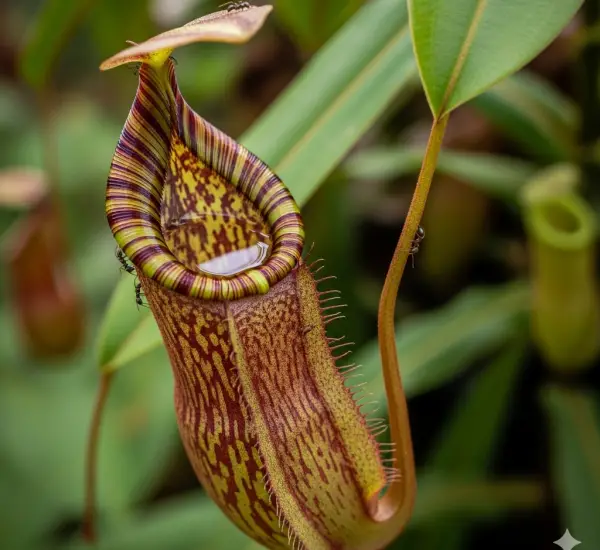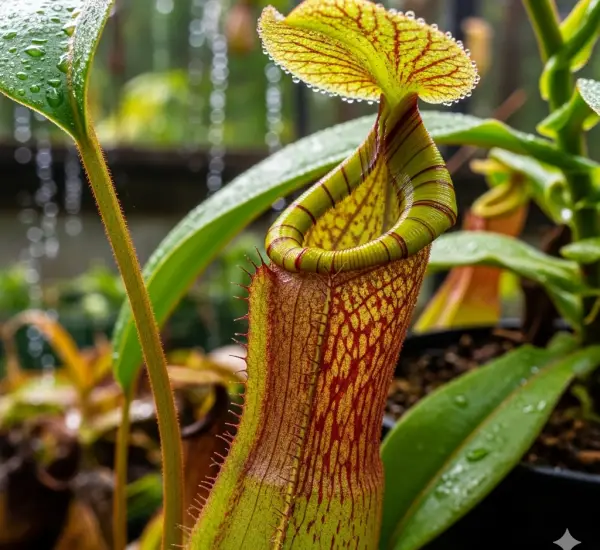Growing strawberries at home is both satisfying and surprisingly easy, especially when using self-watering containers made from recycled plastic bottles. This simple method reduces daily watering needs, makes the most of vertical space, and produces sweet, juicy berries in small areas like balconies, patios, or sunny windowsills.
Here’s how you can grow your own strawberries using discarded plastic bottles—an efficient and sustainable approach perfect for beginners and small-space gardeners alike.
Why Use a Self-Watering System?
Strawberries need consistent moisture to produce sweet, plump fruit. Too much water can rot the roots, while too little can cause poor fruit development. A self-watering container ensures the soil remains moist at the right level, reducing the guesswork and maintenance involved in daily care.
By converting used plastic bottles into self-watering pots, you can also help reduce waste and save on gardening costs.
Materials You’ll Need
To get started, gather these simple items:
-
One large plastic bottle (1.5 to 2 liters)
-
Cotton rope or thick string (to act as a wick)
-
Sharp knife or scissors
-
Potting soil (light and well-draining)
-
Strawberry seedlings or runners
-
Organic compost or fertilizer
-
Clean water
Optional: small drill, paint or tape to cover bottles and protect roots from light.
Step-by-Step Instructions
1. Prepare the Bottle
Take a clean plastic bottle and cut it in half. The top half will hold the soil and plant, while the bottom half will act as a reservoir.
Make a small hole in the bottle cap and thread a piece of cotton rope or string through it. This wick will draw water from the bottom reservoir into the soil above.
Ensure the rope is long enough to reach the bottom of the reservoir and extend a few inches into the soil chamber.
Screw the cap back on and invert the top half into the bottom half like a funnel.
2. Add Soil and Plant the Seedling
Fill the top half with light potting soil mixed with compost. Moisten the soil slightly before planting.
Make a small hole in the center and gently plant the strawberry seedling, ensuring the roots are covered and the crown sits just above the soil surface.
Pat the soil gently around the base of the plant to provide support.
3. Fill the Water Reservoir
Pour clean water into the bottom half of the bottle (the reservoir), ensuring the cotton wick is fully submerged. This will allow water to gradually move up into the soil through capillary action.
Check that the top half fits snugly inside the bottom to prevent tipping or spilling.
If you’re growing multiple strawberry plants, repeat the process with additional bottles.
Placement and Care
Sunlight
Strawberries thrive in full sunlight. Place your self-watering bottles in a location that receives at least 6–8 hours of sun each day. A sunny balcony, rooftop, or south-facing windowsill is ideal.
Feeding and Fertilizing
To encourage strong growth and lots of sweet fruit, feed your plants every two weeks with a diluted organic fertilizer or compost tea. Strawberries benefit from potassium-rich feeding during flowering and fruiting stages.
Watering
Thanks to the self-watering design, you won’t need to water daily. Check the reservoir every few days and refill as needed, especially in hot weather.
Avoid overfilling, as too much standing water can become stagnant and attract pests.
Tips for Bigger, Sweeter Berries
-
Use mulch (like straw or dried leaves) on top of the soil to retain moisture and keep berries clean.
-
Pinch off the first flowers to encourage stronger root growth and larger later harvests.
-
Trim runners (side shoots) if you want to focus on fruit production rather than new plant growth.
-
Rotate containers occasionally so all sides receive equal sunlight if placed in partial shade.
Common Issues and How to Solve Them
-
Yellowing Leaves: This could indicate overwatering or nutrient deficiency. Check the wick, adjust watering, and consider adding a mild fertilizer.
-
Small or Misshapen Fruit: May result from poor pollination or lack of potassium. Ensure the plants get enough light and nutrients.
-
Pests: Watch for aphids or spider mites. A gentle spray of neem oil or soapy water can help keep them at bay.
Harvesting Strawberries
Your strawberries will be ready to harvest when they turn fully red and slightly soft to the touch. Gently twist or snip them from the stem. Regular harvesting encourages the plant to produce more fruit.
Be sure to enjoy your berries fresh, or refrigerate them if not eaten immediately.
Conclusion
Growing strawberries in self-watering plastic bottles is a clever and resourceful gardening method, especially for those with limited space. This approach not only saves water and reduces waste but also provides a consistent environment for healthy growth and sweet fruit.
Whether you’re a first-time gardener or looking to expand your homegrown produce, this technique offers a fun and productive way to enjoy fresh strawberries all season long.



